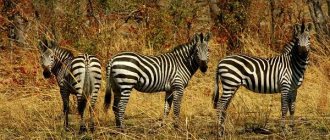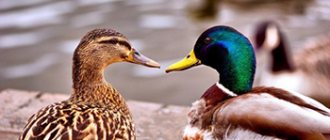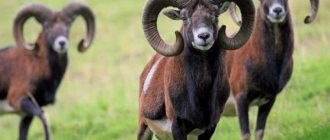- Exotic pets
| Data left by users (City, cost) | |
| Samara | 15000 |
| Tobolski | 3000 |
| Irkutsk | 7000 |
| Belgorod | 1000 |
| Voronezh | 2000 |
| Moscow | 1000 |
| Kirov | 10000 |
| Omsk | 5000 |
| Saint Petersburg | 3000 |
| Ryazan | 1000 |
| Cherrkessk | 10000 |
| Moscow | 30000 |
| Armavir | 1,000 rub. |
| Chelyabinsk | 1000 |
| Novoanninsky | 1000 rub. |
| Svatovo | 1000 |
How to choose and cost an animal?
The choice of the type of monkey to keep depends, first of all, on the thickness of the wallet. This animal is expensive, and its maintenance is also quite expensive. Weigh this argument well: if there is little money, then there is nothing to choose. The answer to the question of how much a domestic monkey costs is from $1,000 . Marmosets are sold at prices ranging from $1,500 to $1,800 . Some types of monkeys cost up to $8,000 . Pay attention to the size of the living space: it is better if the monkey has a separate room. Monkeys can carry dangerous diseases, so make sure you have a certificate from a veterinarian. Do not be tempted by low prices and attractive offers, refuse to buy primates from dubious dealers (read the reviews). The animal must have a healthy and well-groomed appearance and not be aggressive.
It is good to buy baby monkeys, then it will be easier to tame them. When buying an adult animal, you need to take into account that it is accustomed to the conditions of its previous owner and considers him the leader. Please note that these are very sociable animals. If you have a reserved character or work “from morning to night”, refuse to breed them at home. Some species of monkeys live up to 40 years, so consider whether your age will allow you to properly care for the animal over these years.
Marmoset habitat
species of marmosets , about 40. The main ones are: dwarf marmoset, common marmoset and white-eared marmoset . They live in the southern Amazon. They are also found in places such as Colombia, Ecuador, Peru and Brazil.
More often, primates can be found not far from rivers, in places where they overflow their banks during the rainy season. Precipitation amounts to 1000-2000 mm annually. The acceptable temperature for them ranges from 19 to 25°C. Some species have adapted to survive in the harsh conditions of the North Atlantic. Or in dry places where rainfall is seasonal.
Drought can last up to 10 months. Temperatures in such areas are not as stable as in the Amazon forests. And there is less vegetation in it. Animals rarely come down to earth. Mostly they spend all their time in the trees. But primates do not climb to the very top, but live within 20 m from the ground, so as not to become a victim of birds of prey.
In the photo there is a white-eared marmoset
Little marmosets sleep at night and are awake during the day. Get up 30 minutes after the first rays of the sun appear and go to bed 30 minutes before sunset. The overnight shelter is a hollow in a tree with a dense crown, intertwined with liana. They bask in the sun for half the day, and the rest of the time they look for food and care for each other's fur.
Cost of different types
Brown capuchin
Brown capuchin (lat. Sapajus nigritus) the weight of an adult animal can reach 6 kg, body length 30-35 cm, tail 30-56 cm. Males are larger than females. They are considered the smartest monkeys of the New World. These monkeys are easy to keep in captivity and, with proper care, can live up to 50 years.
Price : 160,000 – 180,000 rub.
Saymiri squirrel
These small and smart monkeys are considered one of the calmest and non-destructive when kept at home. The size of saimiri is small. Body length 26-36 cm. Tail length 35-42 cm. Weight approximately 750-1100 g.
Price : 110,000 – 130,000 rub.
White-eared marmosets
Ordinary marmosets or marmosets are charming small monkeys. Body length with head - up to 20 - 30 cm, tail length up to 40-50 cm. Weight: 250-320 g, males are slightly larger than females. Life expectancy is 10 years in captivity up to 16 years.
Price (average): 85,000 – 90,000 rubles.
Approximate prices based on recent listings:
- baby marmosets available in St. Petersburg – 80 thousand;
- male white-eared marmoset 2 years old from owners in Sochi – 50 thousand;
- marmoset in Kemerovo without the possibility of shipment - 80 thousand;
Red-armed tamarin
The red-handed tamarin (Saguinus midas) is a species of marmoset monkey from the genus Tamarin. The body length is from 21 to 28 cm, the tail is from 31 to 44 cm long. Weight is from 400 to 550 g. Life expectancy is 10 - 15 years. The red-handed tamarin is an omnivore and is active during the day. The main diet is fruits, insects, nectar and tree sap.
- Dog's sense of smell
- Maine Coon
- Domestic iguana
- How much does a raccoon cost?
- Interesting facts about cats
- Cute dog breeds
Price : 85,000 – 95,000 rub.
Cynomolgus macaque
The Javan macaque is one of the most common macaques both in circus training and in home keeping. Medium sized monkey. Body length is from 40 to 60-65 cm. The weight of an adult male is 4 - 8.5 kg, females 2.5 - 3.8 kg.
Price : 165,000 – 180,000 rub.
Dwarf marmoset
The pygmy marmoset (lat. Cebuella pygmaea) is a species of primate from the marmoset family (Callitrichidae). It is one of the smallest representatives of the entire order of primates. Their size is only from 11 to 15 cm, not counting the tail, which is from 17 to 22 cm long. The weight of dwarf marmosets is from 100 to 150 g.
Price : 80,000 – 90,000 rub.
Green monkey
Green monkeys are small representatives of the Old World monkeys; these monkeys were known in ancient Egypt. Body length with head 57-71 cm, tail 30-48 cm, weight: females 2.5-3.5 kg, males 5-7.5 kg. Life expectancy in captivity is up to 45 years.
Price : 145,000 – 160,000 rub.
When estimating expenses, take into account the relocation of the pet (if necessary), registration of a veterinary certificate and a financial agreement. As a rule, this can be abandoned in favor of savings. Selling a pet with all the documents will cost 5–10% more.
Keeping a pet
Monkey room
Whatever breed of macaque you buy, it must be kept in a cage or enclosure. To do this, you can fence off part of the room for her. When you let the monkey out to walk around the room or apartment, you need to keep a vigilant watch over it, otherwise the mischief maker may tear and ruin things and books. If she comes across an aquarium on her way, it is likely that the pet will want to feast on snails and fish that she catches from it.
An inquisitive animal can open water taps, gas burners, and start household appliances. Therefore, for the safety of people and the monkeys themselves, these animals need mandatory supervision when you let the primate out of the cage to walk around the house.
If in one part of the room there is a monkey’s cage, then in another, larger part, there may be a monkey’s walking area. From here you will take out everything valuable, breakable and anything that she can break. It is convenient to give the macaque a whole room for the reason that monkeys can be quite noisy, and this way they will disturb the owner and his family less.
When choosing a room for a monkey, you need to know that the temperature in it should not be lower than +22°C, it should be dry and light enough.
When you decide which cage your monkey needs, remember that the animal is mobile. He needs to jump and move around, so the monkey’s cage must be spacious and durable.
A retractable metal tray will make caring for your macaque easier. Large shavings and clean river sand are poured onto its bottom. But you don’t need to put paper or newspapers, otherwise the animal will tear them into small pieces.
We must not forget that monkeys are quite smart. Therefore, the cage must be nickel-plated, all-metal, welded from a thick mesh. If it is prefabricated, with screws, then while family members are at work or school, a smart animal can disassemble this structure and break free. Then the consequences can be very unpleasant. In this regard, the door must close well so that the primate cannot open it - it is better to lock it with a key.
In the summer, you can take the monkey with you to your dacha or village and keep it in an enclosure there. A garden enclosure is built on a foundation. Its area must be at least 9 square meters. m. A metal mesh is stretched over a frame of beams. For small primates, its cross-section should be 2 x 2 cm, for large ones 5 x 5 cm. The mesh is stretched on three sides, on the fourth, northern side, the enclosure is adjacent to the building. The roof can be made single or gable, covered with slate, roofing felt or other roofing material. The door is made quite high so that a person can easily pass through it.
There should be several perches inside the cage or enclosure so that the animal can rest on them. You can place a felled and processed tree inside the enclosure and secure it well; the monkey will climb up and down on it, entertaining himself and those around him.
Drinkers and food bowls are also necessary items that should be in a cage or enclosure. Hang a small mirror on the wall, looking at yourself in it; the macaque will also amuse not only itself, but also those who will watch it.
What to feed monkeys at home?
In principle, rhesus and cynomolgus monkeys are not picky when it comes to nutrition, and can eat foods from your table, with the exception of fried, smoked, spicy and salty foods. However, make sure that the basis of your diet is plant foods. You can cook milk porridge for macaques, give them bread soaked in milk, boiled potatoes seasoned with vegetable oil, and prepare vegetable salads for them.
By the way, in winter, to prevent infectious and viral diseases, give the macaque onions - it will increase the primate’s immunity and help it not to get sick.
The appetite of macaques, if the animal is healthy and nothing bothers it, is excellent, however, make sure not to overfeed them, since in the absence of physical activity, a sedentary lifestyle and an unbalanced diet, these animals are prone to obesity. Therefore, divide the total amount of food into 3-4 meals, and feed the macaque at certain hours, without allowing him to snack.
By the way, we managed to find a developed composition of mixed feed for monkeys, which, according to experts and scientists, is ideally balanced. You can use this as a guide when thinking about what to feed your monkey. It includes 34% meal, 13% cod fish meal, 24% corn flour, 10% sugar, 4% refined soybean oil, 8% wheat bran and 3% mineral mixture, as well as 2% vitamins. You can experiment with this menu basis, and instead of flour, cereals and sugar, give the macaque boiled potatoes 2 times a week, add dried fruits, vegetable oil, and eggshell powder as a mineral mixture to the milk porridge. And now, the most interesting moment. To keep your macaque healthy, its diet needs to include... insects. These could be chafers, silkworm pupae, mealworms... without such a specific part of their menu, the monkey may begin to get sick.
Caring for monkeys at home
To prevent an unpleasant odor in your apartment, clean your animal’s cage every day. At the same time, see if it is hiding food. Such supplies must be thrown away.
You can put diapers on monkeys and change them like a small child. But they must be removed at night. The monkeys are washed 2 times a day. In the evening, after you remove the diaper, bathe the animal in a bathtub or basin of warm water using tear-free baby shampoo. After this, dry it well and let it dry in a warm place. In the morning, the animal needs to be bathed again, and then put on a diaper.
When keeping monkeys, it is important to know that they adapt well to a daily routine. If you want to change it suddenly, the animal may experience stress. This can be caused by the appearance of a new person, sharp sounds, flashes of light. All this can cause the monkey to become aggressive.
Therefore, do not make sudden movements near the animal, speak to it kindly, and do not shout. You can speak strictly, but calmly and quietly only when the animal does something wrong.
If treated well, the pet will treat you well, understand what you want from it and be calm and flexible.
Population and species status
According to experts, marmosets do not belong to the category of animals that need protection. Due to the significant distribution, the number of these animals is at a stable level. Despite this, marmosets are listed in the Red Book, but under the status of a species of “least concern”. In our time, nothing threatens this species of animal, although some populations are subject to negative impacts associated with loss of habitat.
Interesting information! Due to wildlife trade, marmosets were placed on CITES Appendix I in 1977-1979, but after some time the status was downgraded to Level II. These animals are threatened by habitat loss in some areas, as well as wildlife trade in other areas.
People became interested in marmosets for their behavioral characteristics, as well as their unique set of vocal data when communicating with each other. In areas characterized by intensive tourism, monkeys adapt to human proximity, becoming less aggressive, although not as playful. In addition, animals are forced into layers of the tropical forest, which are located higher than these animals are used to living.
Diseases and their treatment
In damp and cold climates, it is very difficult to keep primates healthy. But still, preventing diseases is a little easier than treating an already sick animal. Monkeys can suffer from all human diseases, so it is very easy to become infected from a sick owner. In turn, they can infect their hosts. If the acquired animal is sick, then the health of the owner will be at risk. The most dangerous diseases are hepatitis and HIV.
And a variety of parasites, both external and internal, are found in every individual caught in the wild. Therefore, first of all, you should fight worms, ticks, and fleas. Pass all the tests and do this twice a year, carrying out anthelmintic treatment if necessary.
Monkeys are very vulnerable to pulmonary and colds; they can get dysentery, pneumonia, which turns into tuberculosis. Quite often, diseases end in the death of animals. It is necessary to examine your pet every day. At the slightest sign of a change in her usual appearance - drowsiness, lethargy, increased dishevelment, it is best to contact a veterinarian as soon as possible. True, there are not so many doctors who treat primates specifically, but still, any veterinarian will provide some help.
Monkeys may have toothache, headaches, constipation and stomach upsets. Over time, the owner understands how to treat a particular disease, what herb to give, or what to exclude from the diet. But in all unclear cases, you should consult a doctor; the sooner you do this, the greater the chances of curing the animal.
Monkey in the house: pros and cons
The positives of monkey breeding include:
- Cheerful character.
- Funny look.
- Friendly character.
- Well developed intellect.
- They become very attached to their owner, actively showing love with affection, kisses, and hugs.
- Primates require a lot of attention, so they will brighten up loneliness.
Disadvantages of keeping monkeys at home:
- Aggressive, angry behavior when not properly cared for.
- The need to constantly care for the animal, play, caress, pay attention.
- Females have menstrual flow monthly.
- Animals can masturbate.
- Monkeys can infect humans with hepatitis or HIV.
- Some species mark territory or rub themselves with urine.
- High cost of monkeys, high maintenance costs.
When deciding to buy a pet monkey, remember that this animal will require a lot of time and effort. Be prepared not to deviate from the goal, do not throw the unwanted pet out into the street, take pity on it, because it is not for nothing that they say that we are responsible for those we have tamed. Study the nature of the primate, guarantee the animal attention - and love will be rewarded to you a hundredfold.
Video
Nutrition
The diet of marmosets is varied. In the wild, the menu consists of frogs, chicks, small rodents, as well as fruits, fruits and berries. Primates love to drink tree sap, eat gum and some resins.
They collect mushrooms, nectar, and flowers. The main food of marmosets are larvae and insects. These proteins are enough to satisfy the needs of small monkeys.
To extract sap from a tree, marmosets chew the bark, thereby stimulating the secretion of more tree sap. Then the monkey scoops out or licks the secretions. Primates do not search for food alone, but in small groups.
They obtain food using incisor teeth. They drink fresh water, which is collected on leaves, flowers or shoots of plants. Due to their low weight, animals can reach fruits on the thinnest branches, which monkeys larger than them cannot do.
In captivity, instead of frogs and other crawling creatures, marmosets are given chicken meat. You can purchase snails and insects from pet stores to supplement your protein supply. You can give boiled eggs, cottage cheese and milk.
They usually become attached to those who feed them. At the time of feeding, marmosets best get used to their new owner. These animals adapt well to the new diet.











